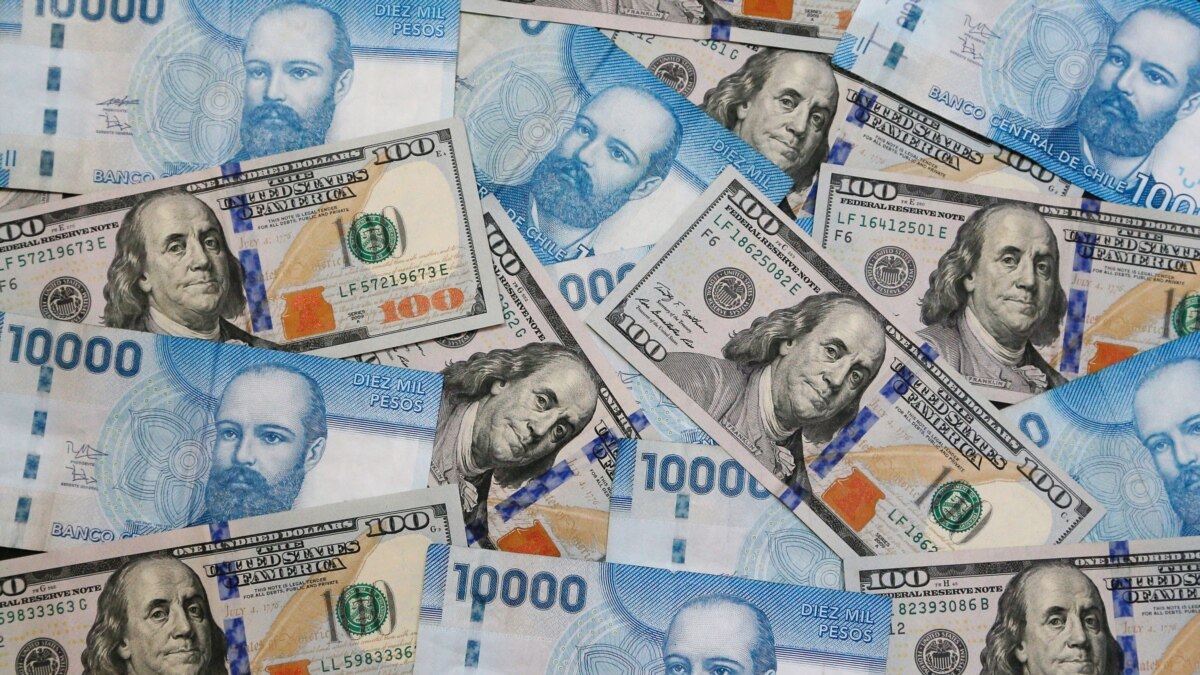Most Latin American currencies fell on Friday, due to a strong global advance in the dollar after solid employment data in the United States that for the moment removed the specter of a recession in the world’s leading economy.
Meanwhile, most equity markets posted gains.
US employers hired far more workers than expected in July and the unemployment rate fell to a pre-pandemic low of 3.5%, the strongest evidence yet that the economy was not in a recession.
Nonfarm payrolls added 528,000 jobs last month, the Labor Department said in its employment report on Friday, closely watched by markets.
Strong job growth could keep pressure on the Federal Reserve to make a third interest rate hike of 75 basis points at its next meeting in September, though it will largely depend on inflation readings.
The dollar index, which compares the greenback against a basket of six first-order currencies, climbed around 0.8% near the close.
The losses were led by the Chilean peso, which fell 1.88%, to 919.10/919.40 units per dollar, despite the daily injection of foreign currency carried out by the Central Bank, to accumulate a weekly drop of 1, 95%. Meanwhile, the leading index of the Santiago Stock Exchange, the IPSA, rose 0.69% to 5,211.50 points.
The Mexican peso was trading at 20.4080 per dollar at the close, with a loss of 0.40%, in line with the performance of other major emerging currencies.
“The peso remained above the key support at 20.30 and is under pressure but capped, for now, at 20.50. However, the crossover of the 50 and 200 day averages points to further pressure. As long as it holds for on top of the support there is a risk of depreciation,” said Georgina Muñiz, technical specialist at VectorAnálisis.
The main stock index, made up of the 35 most liquid companies in the Mexican market, fell 0.41% to 46,723.43 units, while investors assimilated the employment report in the United States.
“With today’s data, bets are increasing that the US monetary authority would have to raise its funding rate by 75bp -basis points- in its next meeting in September. Before the report, the market was more inclined to speculate with an increase of 50bp,” said the firm CI Banco.
The Brazilian real appreciated 1.03%, to 5.1689 units per dollar, after reversing slight losses in the first hour, while the Bovespa index of the B3 exchange in Sao Paulo gained 0.47% to 106,387.33 points.
With this performance, the Bovespa accumulated a gain of 3.12% in the week, the third consecutive increase, also helped by the bet that the Central Bank could have closed on Wednesday or will soon end the cycle of interest rate hikes. in Brazil.
In Argentina, the peso fell 0.2% to 132.91/132.92 per dollar in depreciation regulated by the central bank, while the Merval stock index rose 0.47% to 121,003.89 units, in amid an operation expectant to the implementation of recent economic measures announced by the new Minister of Economy, Sergio Massa, who will seek to channel the country’s accounts.
“After the news from Sergio Massa, the market was calm, and hinted that it expects the passing of days to see how each of the aforementioned changes will impact and seeking to anticipate the possible modifications to come”, estimated Ayelen Romero of Rava Bursátil .
The Colombian peso closed with a fall of 1.17% to 4,345.10 units per dollar, with which it accumulated a weekly drop of 1.36%, while the benchmark index of the stock market, the MSCI COLCAP, gained 1 .45% to 1,300.09 points.
The Peruvian currency, the sol, fell 0.46% to 3.907/3.910 units per dollar. Meanwhile, the benchmark of the Lima Stock Exchange reversed initial losses and closed with an advance of 1.05%, at 506.85 points.
Connect with the Voice of America! Subscribe to our channel YouTube and turn on notifications, or follow us on social media: Facebook, Twitter e Instagram.
–


